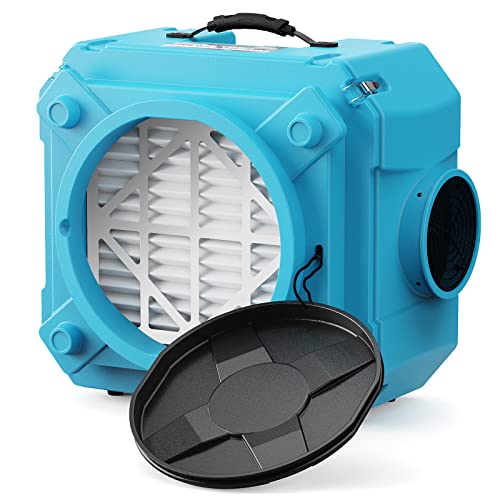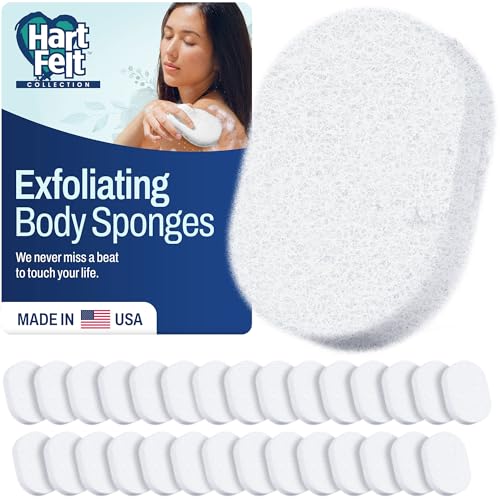




Pollutants in the air can have detrimental effects on both human health and the environment. One of the most effective ways to combat air pollution is through the use of scrubbers. So, what exactly are scrubbers and how do they work? In this article, we will explore the fascinating world of scrubbers and how they remove pollutants from the air.
Scrubbers, also known as air scrubbers or gas scrubbers, are devices that are designed to remove pollutants from industrial exhaust gases. They are typically used in factories, power plants, and other industrial facilities. Scrubbers work by using a combination of chemicals and physical processes to remove harmful substances from the air, ensuring that the emissions released into the atmosphere are cleaner and less harmful.
There are several types of scrubbers available, but the most common type is called a wet scrubber. Wet scrubbers use a liquid, typically water or a water-based solution, to capture and remove pollutants from the exhaust gases. The liquid is sprayed into the scrubber, where it comes into contact with the pollutants. As the pollutants and liquid mix, chemical reactions occur, causing the pollutants to be absorbed or neutralized. The cleaned gas then exits the scrubber, while the captured pollutants are either removed or treated further.
One of the key advantages of scrubbers is their ability to remove a wide range of pollutants from the air. This includes particulate matter, sulfur dioxide, nitrogen oxides, volatile organic compounds, and other harmful substances. By removing these pollutants, scrubbers help to improve air quality and reduce the impact of air pollution on human health and the environment.
In conclusion, scrubbers are powerful devices that play a critical role in the fight against air pollution. Through their use of chemicals and physical processes, scrubbers effectively remove pollutants from industrial exhaust gases, ensuring cleaner emissions. With their ability to remove a wide range of harmful substances, scrubbers contribute to improving air quality and protecting both human health and the environment.
What Are Scrubbers and How Do They Remove Pollutants?
Scrubbers are air pollution control devices that are used to remove pollutants from industrial exhaust gases before they are released into the environment. They are commonly used in power plants, refineries, and other industrial facilities to reduce the emissions of harmful pollutants.
There are different types of scrubbers, but they all work based on the principle of using a liquid to capture and remove pollutants from the gas stream. The liquid can be water or a solution of water and chemicals, depending on the specific application.
Scrubbers use a combination of physical and chemical processes to remove pollutants. The gas stream is passed through the scrubber, and the liquid captures the pollutants by either adsorption or absorption. Adsorption occurs when the pollutants adhere to the surface of the liquid, while absorption happens when the pollutants dissolve in the liquid.
Once the pollutants are captured, the liquid containing them is removed from the scrubber and further treated to separate the pollutants from the liquid. The separated pollutants can then be disposed of safely or reused, depending on their nature.
Scrubbers are effective in removing various types of pollutants, including sulfur dioxide (SO2), nitrogen oxides (NOx), particulate matter (PM), and volatile organic compounds (VOCs). They help in reducing air pollution and improving air quality.
In addition to their pollution control benefits, scrubbers also have the advantage of being able to handle large volumes of gas streams, making them suitable for industrial applications with high emission levels. They can be designed to meet specific emission standards and can be retrofitted to existing industrial facilities.
Overall, scrubbers play an important role in reducing the environmental impact of industrial activities by removing pollutants from exhaust gases. They are a valuable tool in the effort to improve air quality and protect human health.
Understanding Scrubbers and Their Functionality
Scrubbers are devices used in industries and power plants to remove pollutants from exhaust gases and flue gases. They play a crucial role in reducing air pollution and protecting the environment.
Scrubbers work on the principle of contact between the exhaust gases and a liquid solution, often referred to as the “scrubbing agent” or “absorbent.” This contact facilitates the transfer of pollutants from the gas phase to the liquid phase through a combination of physical and chemical mechanisms.
There are different types of scrubbers, each designed to target specific types of pollutants. Some common pollutants targeted by scrubbers include sulfur dioxide (SO2), nitrogen oxides (NOx), particulate matter, and carbon dioxide (CO2).
Wet scrubbers are the most common type of scrubbers used in industries. They utilize water or a liquid solution as the scrubbing agent. The exhaust gases are passed through a scrubbing tower or chamber, where they come in contact with the liquid solution. The pollutants present in the gases react with the liquid, forming compounds that are either soluble or can be easily collected. The cleaned exhaust gases are then released into the atmosphere.
Dry scrubbers, on the other hand, use solid sorbents or dry reagents to remove pollutants. These scrubbers operate on the principle of adsorption, where the pollutants are chemically attracted to the surface of the solid sorbent. The exhaust gases pass through a chamber filled with the sorbent material, and the pollutants adhere to the surface of the sorbent. The sorbent material can then be collected and disposed of properly.
Scrubbers are also equipped with various control systems and monitoring devices to ensure their efficient operation. These systems monitor parameters such as gas flow rate, liquid flow rate, pH levels, and scrubbing efficiency. Regular maintenance and periodic cleaning of scrubbers are essential to maintain their effectiveness and prevent any potential issues.
In conclusion, scrubbers are vital tools in the fight against air pollution. By effectively removing pollutants from exhaust and flue gases, they help preserve the environment and promote cleaner air for everyone.
Types of Scrubbers in Pollution Control
Scrubbers are an essential component of pollution control systems. They are designed to remove pollutants from industrial exhaust gases before they are released into the atmosphere. There are several types of scrubbers that are commonly used in pollution control:
| Scrubber Type | Description |
|---|---|
| Wet Scrubbers | Wet scrubbers, also known as wet collectors, are the most commonly used type of scrubbers. They use water or other liquids to capture and remove pollutants from the gas stream. The liquid absorbs the pollutants, which are then removed from the system. |
| Dry Scrubbers | Dry scrubbers are used when the pollutants are in the form of gases or dry particles. They use a dry sorbent, such as activated carbon or lime, to chemically react with and remove the pollutants from the gas stream. |
| Electrostatic Precipitators | Electrostatic precipitators, or ESPs, are used to remove particulate matter from the gas stream. They use an electric charge to attract and collect the particles on charged plates or grids, which are then removed from the system. |
| Fabric Filters | Fabric filters, also known as baghouses, are used to remove particulate matter from the gas stream. They use a fabric filter media to capture the particles, which are then collected and removed from the system. |
| Venturi Scrubbers | Venturi scrubbers use a venturi throat to create a high-velocity gas stream, which increases the contact between the pollutants and the liquid. The pollutants are then captured by the liquid and removed from the system. |
Each type of scrubber has its advantages and disadvantages depending on the specific application. The selection of the appropriate scrubber type depends on factors such as the type and concentration of pollutants, the gas flow rate, and the space and cost constraints.
Scrubbers: A Solution for Environmental Compliance
Scrubbers are a crucial technology in achieving environmental compliance for industries that emit pollutants. These devices help remove harmful substances from industrial exhaust gases before they are released into the atmosphere.
What are Scrubbers?
Scrubbers, also known as flue gas desulfurization systems, are air pollution control devices used in industrial processes such as power plants, refineries, chemical plants, and manufacturing facilities. They are designed to remove pollutants, including sulfur dioxide (SO2), nitrogen oxides (NOx), particulate matter (PM), and other hazardous gases.
How do Scrubbers Work?
Scrubbers use a variety of techniques to capture pollutants. The most common type of scrubber is a wet scrubber, which utilizes a liquid, such as water or alkaline solutions, to remove the pollutants from the exhaust gas stream. The exhaust gas is forced through a scrubbing solution, where the pollutants are absorbed or chemically reacted to neutralize them.
Another type of scrubber is a dry scrubber, which uses a dry absorbent material, such as limestone or activated carbon, to capture the pollutants. The exhaust gas passes through the material, allowing the pollutants to be adsorbed or chemically reacted to remove them from the gas stream.
Advantages of Using Scrubbers for Environmental Compliance
Scrubbers offer several advantages in achieving environmental compliance:
- Reduced Emissions: Scrubbers remove a significant amount of pollutants from industrial exhaust gases, helping to reduce the emission of harmful substances into the atmosphere.
- Compliance with Regulations: Many countries have strict regulations on industrial emissions, and using scrubbers can ensure compliance with these regulations.
- Improved Air Quality: By removing pollutants, scrubbers help improve air quality in surrounding areas, reducing health risks for nearby communities.
- Resource Conservation: Scrubbers can also help conserve resources by recovering valuable chemicals or by-products from the scrubbing process.
In conclusion, scrubbers play a vital role in achieving environmental compliance for industries. They are effective in removing pollutants, reducing emissions, and improving air quality. By using scrubbers, industrial facilities can meet regulatory requirements while contributing to a cleaner and healthier environment.
Benefits of Using Scrubbers for Air Pollution Control
Scrubbers are highly effective devices for controlling air pollution and offer several benefits compared to other methods. These benefits include:
1. Removal of Various Pollutants: Scrubbers can effectively remove a wide range of pollutants from industrial emissions, including sulfur dioxide (SO2), nitrogen oxides (NOx), particulate matter, and volatile organic compounds (VOCs). This makes them versatile and suitable for use in various industries.
2. Compliance with Environmental Regulations: Using scrubbers helps industries meet environmental regulations and standards set by authorities. Scrubbers can help reduce emission levels to meet specific limits and achieve compliance, preventing potential fines and penalties.
3. Protection of Human Health: By removing pollutants from emissions, scrubbers help improve air quality and protect human health. Pollutants emitted by industries can have harmful effects on respiratory systems and contribute to the development of respiratory diseases. Scrubbers play a vital role in reducing these harmful emissions and creating a safer environment for workers and nearby communities.
4. Reduction of Acid Rain Formation: One of the significant benefits of using scrubbers is their ability to remove sulfur dioxide (SO2) from emissions. SO2 is a leading contributor to acid rain formation. By capturing and neutralizing SO2, scrubbers help reduce the levels of acid rain and its detrimental effects on ecosystems, infrastructure, and water bodies.
5. Energy Efficiency: Scrubbers are designed to be energy-efficient, ensuring minimal energy waste during the pollution control process. This not only helps industries reduce their energy consumption and costs but also makes scrubbers a sustainable and environmentally friendly solution.
6. Odor Control: Scrubbers can also be used to control odor emissions in various industries, such as wastewater treatment plants and food processing facilities. By removing odor-causing compounds, scrubbers contribute to a more pleasant working environment and improve the overall quality of life.
Overall, scrubbers offer numerous benefits for air pollution control, making them an essential tool for industries striving to reduce their environmental impact and ensure a healthier and cleaner future.






